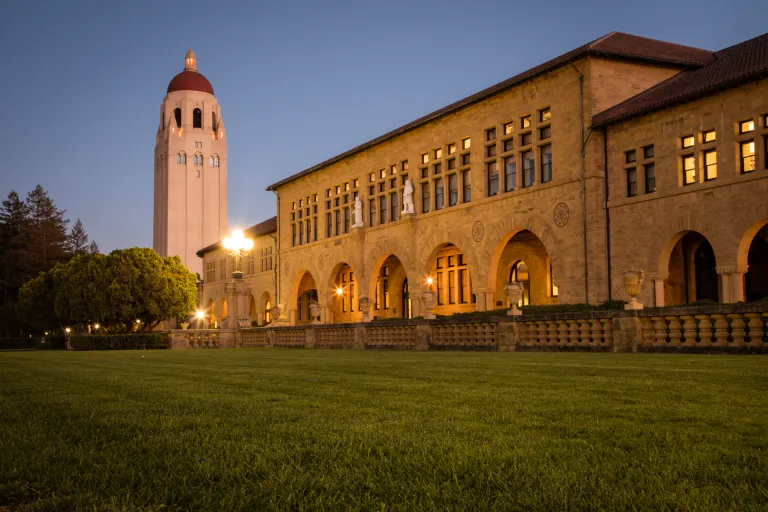By Kamdin Gutierrez and Christian Sanchez
Time and again we were reminded that we belong here at Stanford. That we are not imposters and to resist feeling as such. This is all well and good when NSO programming, internships, extra-curriculars, officer positions and even scholarships are extended and often reserved opportunities for the freshman cohort. But there is an entire group of first-year students that are not brought equally into the fold: the transfers.
Transfers attempting to join first year programming can quickly find that they do not fit or are less than welcome to many of these opportunities. Club positions reserved for freshmen don’t apply to all first year students (transfers). While those positions reserved for upperclassmen presume on-campus experience that an incoming sophomore or junior transfer does not have. One might think that transfers are better off with the upperclassmen, but we don’t quite fit there either. Let’s not forget that for incoming transfers, this is our first year here, too. To be a first-year student given the assumption of campus knowledge on par with the upperclassmen is preposterous to say the least.
Whether a traditional- or nontraditional-age transfer, we are not graced with some inherent knowledge of the intricate workings of the Stanford process. This may come as a shock given the expedience with which the University expects a turnover of the transfer cohort year by year. An incoming transfer is expected to breeze through the Stanford process, knowing their direction upon arrival and having completed the majority of their undergraduate education. This expectation ignores the fact that such prerequisites consume time that transfers, generally, do not have. Though some of us are lucky enough to get a few freshman prerequisites waived, the vast majority find themselves tasked with completing the same requirements of freshmen with the disadvantage of three to six less quarters to do so. Some go so far as to consider changing majors due to the time allotted and available transferred units. These unfair expectations allow for significantly less time to participate in student groups, research, honors programs and the plethora of opportunities that this University has to offer. We are told to be sure to “explore classes while at Stanford,” but a transfer is already afforded less time for core classes, let alone exploratory ones.
As a result, transfers inevitably feel like an anomaly, a student who is not really a junior and not really a sophomore and is often as wide-eyed to the new campus as any freshman. And yet, after overcoming an acceptance rate four to five times lower than that of regular admissions, we face new obstacles here as we scramble to figure out our paths in our limited time here. This difficulty is only compounded by the verbiage of year-specific opportunities that, to many transfers, feel as though they read, “Transfers need not apply.”
A new world of dilemmas and concerns open up when transferring in with children. The oversights of what it means to be an undergraduate with children are astounding. Moving in, for those of us with children, is one of the most nerve-racking processes that we encounter. The challenges of enrolling children in the neighborhood school district is made needlessly more difficult by a lack of contact or information offered from R&DE. Good luck getting anyone on the phone to answer questions related to our living situation, and when you do, the information is always different. A week before moving in, you are given your address and when you finally arrive, you are handed a key and given directions to your place. Simple, yes. But when you have people who are picking up their lives and moving with you, this process can be overwhelming and is certainly not adequate for the requisite components of a child’s school registration. It is disheartening to see the minimal information provided to incoming families, only to be later greeted by an environment of survival of the fittest and the feeling of having to choose between time with kids or Stanford opportunities. While the diligent and invaluable work of our Undergraduate Advisor (UGA), Alice Petty, certainly makes navigating Stanford more manageable, it leaves me unable to imagine the struggle for those not previously assigned the same advisor.
At present, we shout from our speck that “We are here!” hoping that our UGA can prove that we exist as part of the community, no matter how small we are, even if it’s hard for others to hear us. Luckily, we are making some headway, and we have been working hard with the ASSU to provide a new space for transfers as ex-officio members and will be moving towards working on a permanent space, with voting power, for transfers within the organization.
In the meantime, we’ll keep hoping that we can be heard over the roar of traditional students. And maybe share our collective eye-roll at the statements that tend to follow, “Wait you’re a transfer?” For those fellow transfers that feel forgotten, undesirable or as an imposter within the traditional student body each time you have fielded that ridiculous statement or question, you’re not alone.
